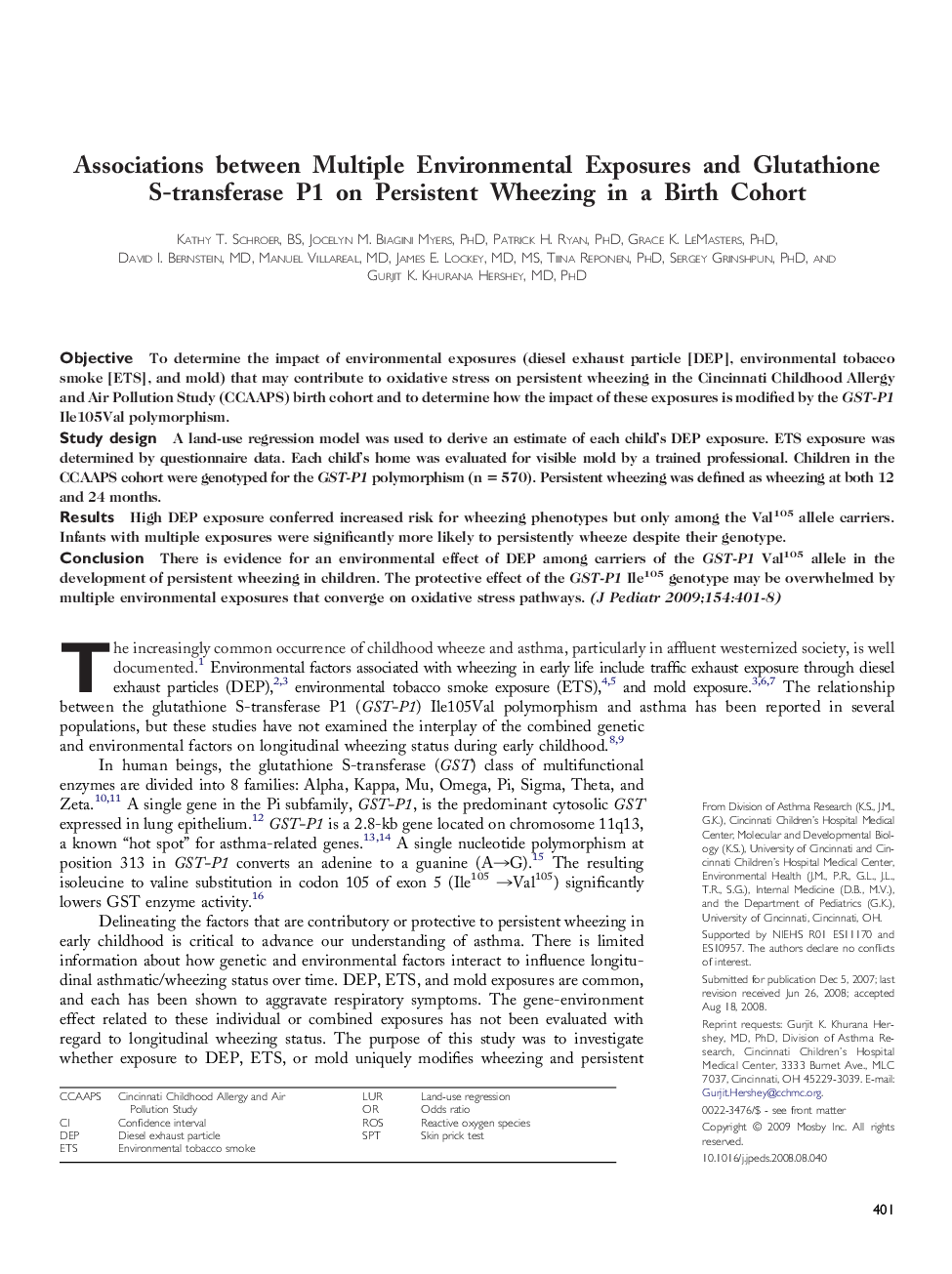| Article ID | Journal | Published Year | Pages | File Type |
|---|---|---|---|---|
| 6225750 | The Journal of Pediatrics | 2009 | 9 Pages |
ObjectiveTo determine the impact of environmental exposures (diesel exhaust particle [DEP], environmental tobacco smoke [ETS], and mold) that may contribute to oxidative stress on persistent wheezing in the Cincinnati Childhood Allergy and Air Pollution Study (CCAAPS) birth cohort and to determine how the impact of these exposures is modified by the GST-P1 Ile105Val polymorphism.Study designA land-use regression model was used to derive an estimate of each child's DEP exposure. ETS exposure was determined by questionnaire data. Each child's home was evaluated for visible mold by a trained professional. Children in the CCAAPS cohort were genotyped for the GST-P1 polymorphism (n = 570). Persistent wheezing was defined as wheezing at both 12 and 24 months.ResultsHigh DEP exposure conferred increased risk for wheezing phenotypes but only among the Val105 allele carriers. Infants with multiple exposures were significantly more likely to persistently wheeze despite their genotype.ConclusionThere is evidence for an environmental effect of DEP among carriers of the GST-P1 Val105 allele in the development of persistent wheezing in children. The protective effect of the GST-P1 Ile105 genotype may be overwhelmed by multiple environmental exposures that converge on oxidative stress pathways.
